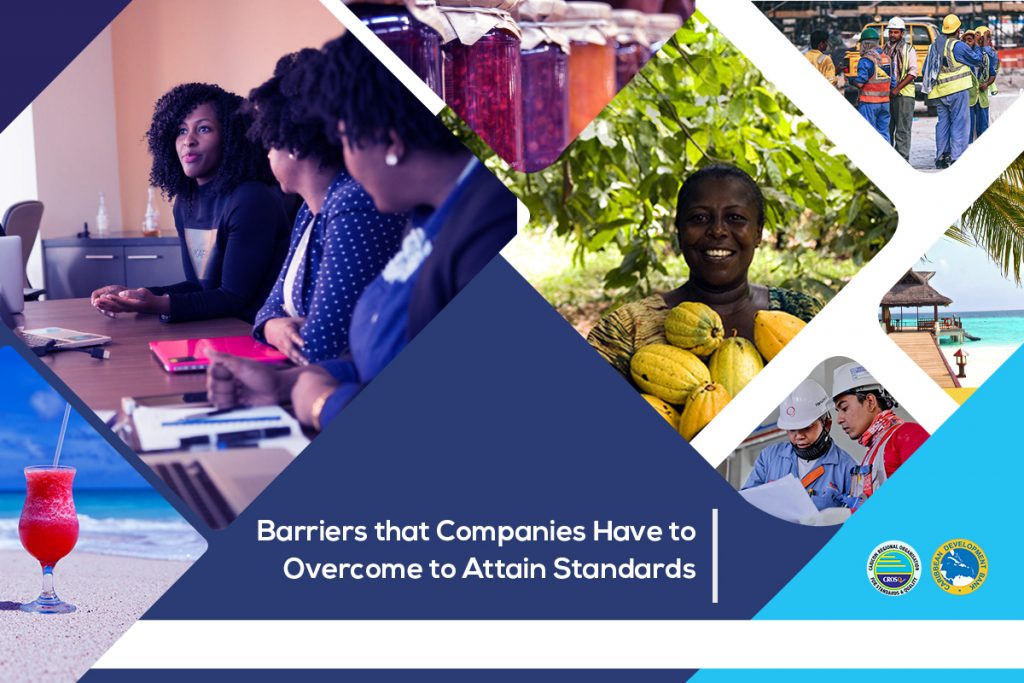5 Barriers That Companies Have to Overcome to Attain Standards
- crosqblog
- on Nov, 19, 2019
- Category Conformity Testing, Demand for Quality
- Comments Off on 5 Barriers That Companies Have to Overcome to Attain Standards

Any business worth its weight in gold understands the value of being certified as compliant with international standards. You are already probably sold on the idea and want to hit the ground running, getting everything in place to attain certain certifications. However, nothing worth having comes easily. There are five barriers to standard attainment that you should consider before taking the leap towards this process. Identifying and addressing these challenges from the get-go will better position your business to receive that official “stamp” of quality approval.
1. High Cost of Certification
Small business owners should consider is the high cost of certification. It can cost as much as 15,000 USD to do everything necessary to get that certificate from an international standards certification body. This cost can be prohibitive for many small business owners and may require restructuring of the business’ financial resources. The business owner can, however, consider grant-funding options from one or more of these sources:
2. Purchasing New Equipment
International standards, such as the ISO group of standards, encourages organisations to adopt new, more efficient business processes. Oftentimes, these business processes need state-of-the-art equipment which requires a large financial investment. This, in itself, is a major challenge for small CARICOM businesses that do not always have easy access to this liquidity and are, therefore, at the mercy of local banks or other financial institutions willing to support the development of small businesses.
You can decide to pursue grants but this is an extensive process which results in delayed disbursement of funds.. It is wise for a business owner to consider cost-cutting measures in other areas of the business in order to assist in the off-setting of resources required for the investment of new equipment, which will in turn improve the output and likely income for the business. Some of these changes may make employees uncomfortable and can cause discord if not properly managed. Business leaders should:
- Communicate clearly with employees
- Invite employees to be a part of the process
- Inspire employees to buy into the vision of taking the business to the next level through meeting standards requirements
- Ensure that all employees receive proper training in the use of the equipment
3. Changing Workplace Culture
Aristotle once said that “Quality is not an act, it is a habit.” This statement reflects one of the greatest challenges businesses face when working towards attaining standards – changing the culture within the business to make quality a habit. People are often resistant to change, especially when it requires more effort from them.
Any business that receives standard certification must consistently provide high quality products and services. Therefore, each business process may need to be altered to produce the expected high quality end-product.
Your business may choose to adopt Lean Six Sigma strategies to reduce waste and improve your most vulnerable business processes. However, your employees will need extensive training and the inspiration to adapt to a new way of doing things. It will not happen overnight and will require a lot of hands-on effort from you. Here are some tips that can help you gradually change employee behavior:
- Ensure that the root causes of issues are addressed. Dealing with quality issues on the surface will only be detrimental in the long-term
- Appraise employees based on long-term quality goals
- Organise the right types of collaboration within the business. Pay close attention to employee strengths and place them in areas where they can shine
- Continuously remind employees that quality is everyone’s business
- Provide incentives to those who cooperate; penalize those who do not.
4. Relationship with Suppliers
A supplier you may have been working with for years may not be able to provide the high-quality raw materials that you need. You may have built a strong relationship over the years but you know that maintaining the relationship will impact the overall quality of your goods. In this situation, you have to identify another supplier. This means bargaining a new agreement with new payment terms and possibly greater expenses. Additionally, you should work with a supplier who is certified to the standards that you are hoping to attain. This may be difficult to do in a small island CARICOM nation.
5. The Ease of Creating a Monitoring Program
Adhering to international standards is an ongoing process. It can be challenging to create an institution-wide monitoring program to track how well the business is doing with meeting the required standards.Such a program requires support at all levels. It may even be necessary to hire someone whose sole responsibility is to oversee the monitoring process. A small business may not have the resources to hire additional personnel to carry out these duties.
Final Words
Costs, workplace culture, supplier relationships and ease of creating a monitoring program are a few important considerations if you want to achieve quality certification. These challenges may initially seem insurmountable, but it is possible to overcome them with the right strategy and problem solving skills. You can be the one who stands out in the crowd by making standard attainment a top business priority.




